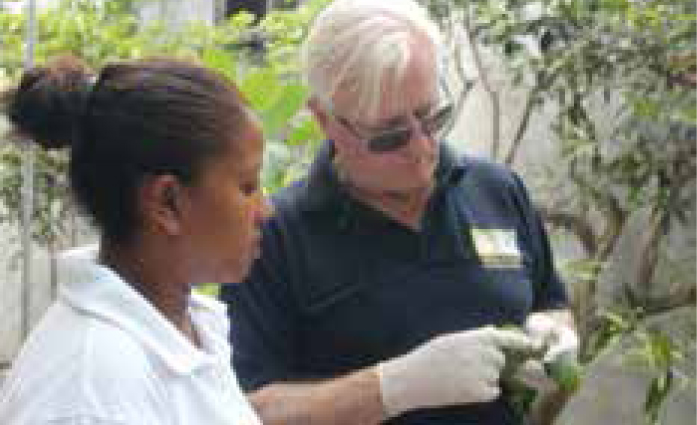In the 21st century, vets and vet nurses are working with wildlife all over the world in different capacities, depending on their skills or training, very different from 50 years ago when a few pioneers were challenging the still-prevailing orthodoxy that disease played little or no part in the regulation of animal populations. Certainly the present situation has come about because of the increasing recognition of the number of species that have become critically endangered over that period, and the efforts of wildlife biologists to rescue them. Zoos have had an important role in connecting the two disciplines — as zoological medicine has grown exponentially and the active role of zoos in field conservation has followed, it has been natural for vets to carry their expertise into the wild.
Critically endangered species are best regarded as critically ill patients. Biologists often have to work with the unknown in trying to stabilise them and vets and vet nurses are all too familiar with that scenario. For many species a rescue effort has to look at the causes of decline very quickly, and the critical care phase may have to proceed with very limited information. On the veterinary side, we may have to deal with ‘unknown unknowns’, an example of which would be the novel transmissible tumour devastating Tasmanian devils in Australia, which turned out to be spread by non-viral transmission of genetic material through bite wounds, but more often we are looking at ‘known unknowns’, working from what we already know about similar species in captivity.
Species rescue commonly features a series of steps which involve hands-on work with individual animals — preliminary observation, captive management, reintroduction, translocation, follow-up monitoring, and disease surveillance — which can mean years of effort. Examples from work with island birds in the Indian Ocean can illustrate this process.
Mauritius is home to endemic birds which had reached desperately low numbers before intervention — the Mauritius kestrel (Falco punctatus), the pink pigeon (Columba mayeri), and the Mauritius parakeet (Psittacula echo). All three have been restored to viable numbers over the last 30 years using the techniques mentioned. The first noticeable connection between them, apart from the loss of their forest habitat, is that they all have family counterparts familiar to avian vets—hunting falcons, racing pigeons and pet parrots—whose disease and captive management problems are well-studied. This allowed us to easily solve dietary and health problems encountered in the initial rescue and captive breeding stages, and to survey incoming birds for the known infectious diseases of their groups. However, it also showed us that when species are at tiny numbers the presence and significance of disease in the population can be hard to spot. This may only emerge during population recovery, examples being psittacine circovirus in the parakeet and trichomonosis in the pigeon.
A further advantage of working with familiar families of birds, or mammals, is that disease testing is readily available, which makes screening of individuals or populations much easier, and this can be applied at the various stages. Even at the early stage of observation, any dead birds can be studied and live birds can be captured, sampled and released. Birds taken into captivity can be tested as they arrive, if necessary protected (from mosquitos, for example), and retested before reintroduction. Birds needing to be translocated to a new site or even another island (as in the Seychelles group) are tested before movement, to avoid moving an infectious agent to a disease-free area. Birds at the destination site are also tested, to avoid moving disease-free animals into a contaminated area. Finally, if funds and field staff are sufficient, the health status of the released population is monitored long-term by a programme of trapping and testing, and by the retrieval of obviously sick or dead specimens.
The role of Wildlife Vets International (WVI) is to fund experienced specialist vets to undertake oversight of programmes involving such hands-on crisis species conservation. This usually involves training of local and expatriate field staff and vets on site although, paradoxically, it is often easier to train field biologists to collect samples and even carry out preliminary post mortem examinations, as they are in constant contact with the animals, whereas experienced vets can be few and far between. WVI will also often cover equipment and laboratory costs, which can be difficult to finance, through contacts with commercial companies and labs.
Besides avian work, the charity is also active in mammal and herptile programmes, including painted dogs, tigers, leopards, primates and UK native mammals, as well as turtles and island tortoises and lizards, from Africa and the Mediterranean across the Middle East to the Russian Far East. All these programmes involve veterinary professionals in most of the key aspects of rescue, captive breeding, reintroduction or rehabilitation, translocation and disease monitoring, and our aim is to extend this involvement as far as possible within species conservation biology.


